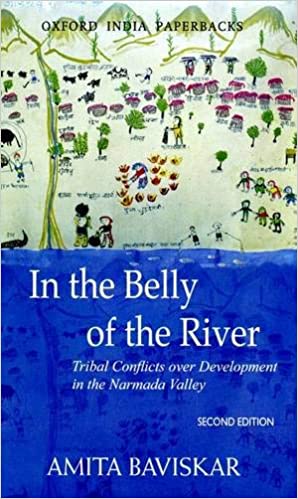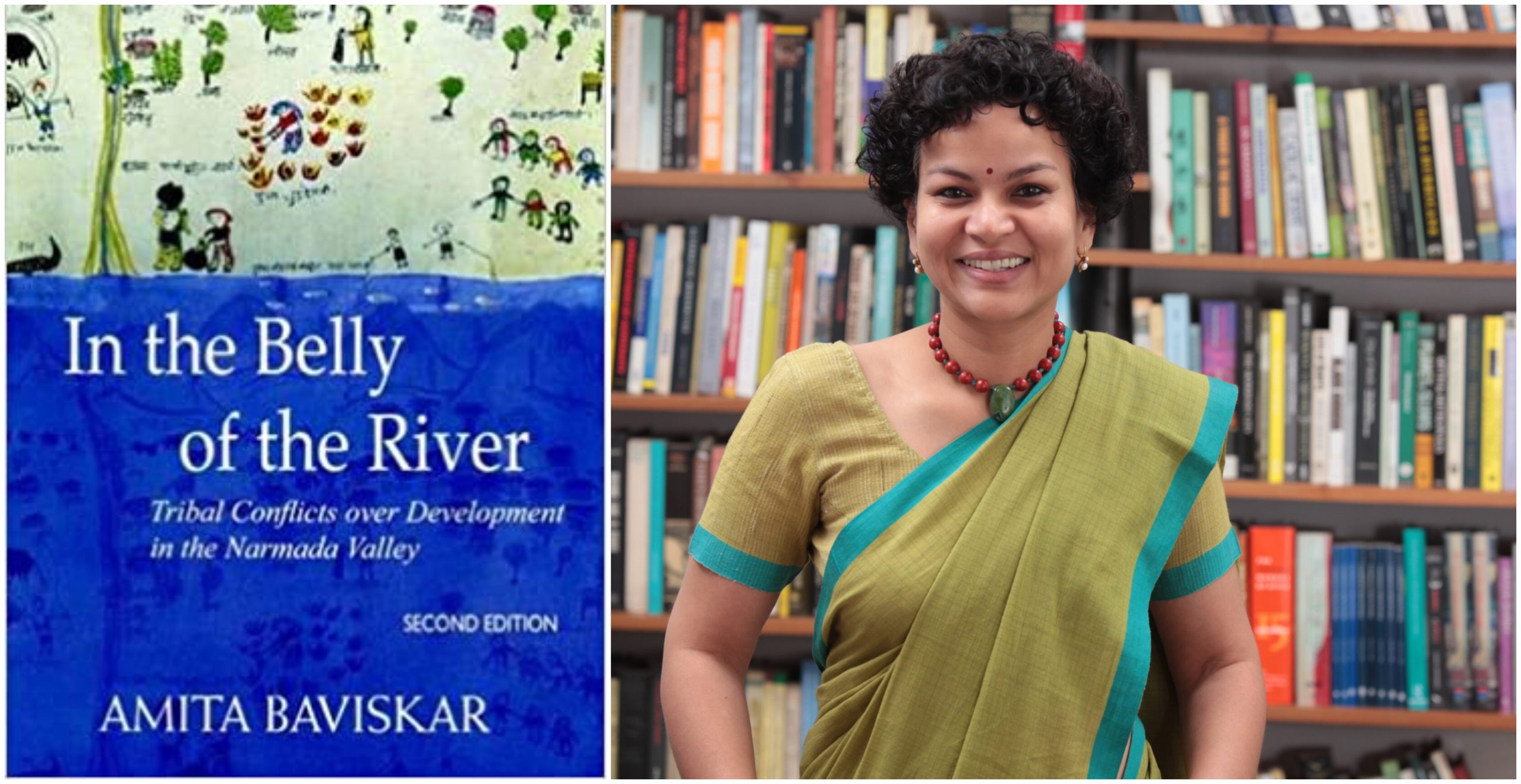‘In the Belly of the River: Tribal Conflicts’ written by Amita Baviskar explores the realities, limitations and concerns of the Bhilala community residing in Anjanvara, a small village located in the Jhabua district of Madhya Pradesh. The book sheds some light on the multi-dimensional politics which forms a part of the lives of the tribal communities.
In the Belly of the River: Tribal Conflicts
Author: Amita Baviskar
Publisher: Oxford University Press, 2004
Genre: Non-Fiction

After independence, the Nehruvian imagination of the economy, an economy which would thrive as a result of industrial expansion, was pursued. The route to a modern industrialised society led to unhindered use of earth’s resources and the forceful transition of poor agriculturalists to the working class. The author draws from ecological Marxism to support green politics by opposing commodification. The author in In the Belly of the River also elaborates on the rise of social movements in India (and contrasts it with the first-world countries) and draws from Guha when she claims that there was a conflict between ‘those who produced and those who owned the means of production’ and that the indigenous communities opposed the process of development due to their tradition of sustainable living.
She also gives an account of the general history of the region along with Hinduization of the tribal population. The author gives us an insight into their agricultural lands, both the land attached to their huts and the produce grown on nevad fields. The agricultural destruction of forests by the state in the past and the usage of the forest land for cultivation, when it’s more suitable for tree plantation, has resulted in the deterioration of the land, of the relationship between the Adivasis and nature and between Adivasis and the State. Their sustenance depends on the cultivation of nevad land. A union called the Khedut Mazdoor Chetna Sangath (the Peasants and Workers Consciousness Union) and the Narmada Bachao Andolan have been engaging with concerns of the tribal population.
I appreciate the vivid picture of the Adivasi culture, their practices and beliefs and their struggles that has been painted by the author. After independence, economic growth and dam projects became a part of the picture of development. However, in the course of planning such development, the various social and ecological costs that had to be paid were largely disregarded. The displacement of tribal population from their native land was considered necessary. In the book In the Belly of the River, the author acknowledges that the idea of development has been challenged by people who are economically, ecologically and culturally dis-empowered. It usually takes the form of a political movement.
The author in In the Belly of the River also elaborates on the rise of social movements in India (and contrasts it with the first- world countries) and draws from Guha when she claims that there was a conflict between ‘those who produced and those who owned the means of production’
The author’s drawings from Ecological Marxism is evident. Ecological Marxism illuminates us on the ecologically destructive inclinations of capitalism. It sheds light on the ways in which the distribution of ownership in capitalist societies determines access to nature and its raw materials and forces access to raw materials to become class linked. It also maintains that capitalism creates unfavourable ecological conditions that jeopardizes its stability along with the stability of nature. I believe that Baviskar has emphasised on the legitimization of exploitation through the ideology of ‘national development’. She successfully elucidates on the exploitation and accumulation of natural resources, by the state, the market and foreign investors, for the purpose of their conversion into commodities.
In the Belly of the River talks about two different political movements present in the valley, namely, Khedaat Mazdoor Chetna Sangh (Sangath) and Narmada Bachao Andolan (NBA) and their strategies. Baviskar has been ctritical of the Andolan’s lack of ability to represent the interests and concerns of the Patidars and its inability to formulate an alternative political culture based on Gandhian principles in the territory. However, I think that the author was being slightly overbearing in her criticism. The author herself spends an enormous amount of the book articulating the troubles encountered by the tribals due to the acquisition of land by dominant classes and castes. Hence, it is very natural that the NBA too would do the same and recognise the hardships of the oppressed classes. The NBA, however, could make an effort to elaborate more on the interests of the Patidars.
Also read: Book Review: These Hills Called Home: Stories From A War Zone By Temsula Ao
The author, through the course of the book, doesn’t give an account of the conversations and methods and research tools used in her study.
In the Belly of the River manages to look at the lived reality of the communities and bring attention to many issues and arguments. It exemplifies that the participation of people in the process of planning for development related activities can help in better decision-making. The state or influential private entities cannot pave the route to development without taking into consideration a large segment of the population and the impact of development on the environment and people’s livelihoods.
In the Belly of the River manages to look at the lived reality of the communities and bring attention to many issues and arguments.
I believe that In the Belly of the River puts forward three very important questions: development – for whom, by whom, the kind that it is and the cost that it entails. None of the questions posed, by the author, can be answered simply. The book serves an insight to the varied changes that can take place in the same movement and establishes that one has to remain aware of the new developments in the field. The book supports all those people’s movements which oppose development that is seen as inequitable and environmentally destructive. The book serves as a classic example of environmentalism of the poor.
For communities living in the forests, the forest itself becomes a major source of their livelihood. Their dependence on the forests does not just limit itself to livelihood, but also includes their basic needs and necessities. It is only the poor who have to pay the price for the affluent section’s aspirations for ‘development’. The book suggests that the integration of such communities in the decision-making process of development can probably result into more inclusive and eco-friendly policies of development.
Also read: Niyamgiri Movement: Questioning The Narrative Of Developmental Politics
Overall, In the Belly of the River helps us to gain a great deal of insight and develop an understanding of socio-anthropological constructs, indigenous communities, the relevance of socio-ecological systems and most importantly, the significance of preserving different ecological systems and the communities associated with those systems to ensure the successful integration of ecology and development.
References
- Ecological Marxism by M. Lynch
- Reviewed Work: In the Belly of the River: Tribal Conflicts in the Narmada Valley by Amrita Baviskar. Sociological Bulletin by R. Dwivedi
Sampurna is currently pursuing Masters in Development from Azim Premji University,Bangalore. She takes a keen interest in matters concerning gender and sexuality. You can find her on Facebook.




